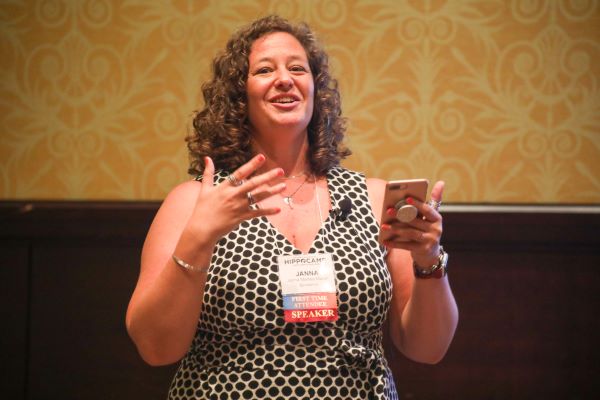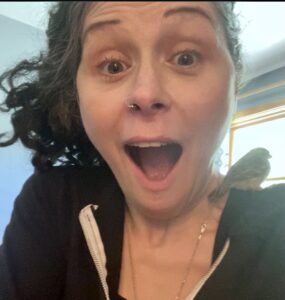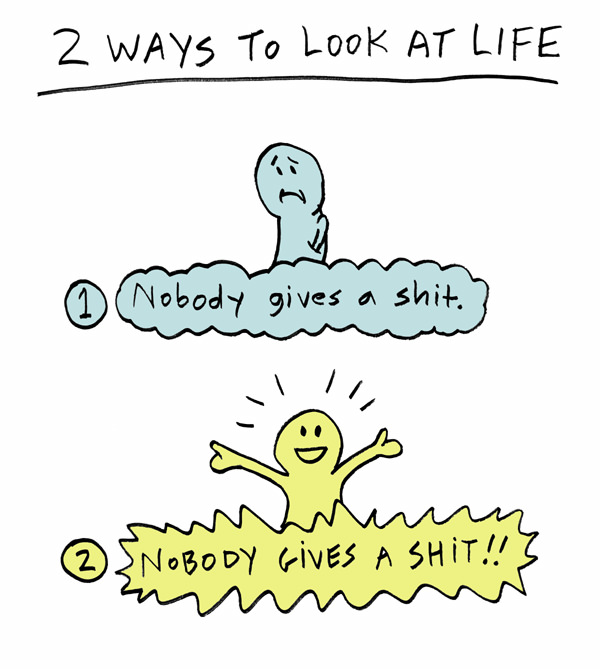by Aimee Christian
This post is part of a HippoCamp 2021 recap series, with guest blog posts written by HippoCamp attendees. Learn more about our conference for creative nonfiction writers.

Janna Marlies Maron of Under the Gum Tree during HippoCamp 2021. (Photo by Lina Seijo for Hippocampus Magazine)
I can never go to enough talks and read enough essays about submission from the editors’ point of view so I wasn’t going to miss Janna’s session. It could be that I need cheerleading. It could be that I like the pep talks. Or, more likely, it could be masochism.
Janna Marlies Maron, editor and publisher of Under The Gum Tree, reminded us that she publishes only 5% of submissions. Which, put differently, means that she has to reject 95% of submissions.
She said that rejection is mostly a numbers game and that most of the time it has nothing to do with us or our writing, which is both the most relieving thing in the world to hear and the worst, most devastating thing in the world to hear. That reminded me of my favorite internet drawing:
She gave us great advice for getting focused about submitting: finding our why and finding our how, which I think about all the time.
1. Work your why. Why do I want to write? This one I knew. I write because I sometimes feel like I will throw up if I don’t. I feel like I can’t sleep, I can’t live my life, I can’t do anything unless I get this thought out onto paper. I am told this is the muse but to me it strikes in the most ungraceful of ways and it feels like a bout of diarrhea until I can shape it into something slightly less unlovely than that first very messy draft. And then, who am I as a writer? And why am I submitting to this particular publication? There’s something about its description of itself, its other publications, its authors, that speaks to me. It’s where I want to be, too.
2. Gather your goals. For me, that’s scheduling. Janna’s next tip is about scheduling, so I might sound like I’m getting ahead of myself, but no kidding that’s what I wrote down and I won’t take it back here because when you have two kids, one of whom is disabled, and a full-time job, and you want to write essays and books, you better make scheduling your number one priority or you won’t get anything done. My handwritten daily goals look like this:
- Edit X, pages 10-30
- Write 1500 words of Y.
- Read Z.
- Email A.
- No Netflix!
3. Then, safeguard your schedule. Check. That part I have.
She talked about her particular framework for the writers she works with and then moved on to her list of dos and don’ts for working with editors once your piece is accepted, and if your piece is rejected.
Janna’s lists of dos and don’ts were not new to me, but I loved her hilarious anecdotes of writers who did not adhere to them were. They eased the tension that comes with the undercurrent I kept hearing like a sad mantra: 95% of all submissions are rejected 95% of all submissions are rejected and I wanted to raise my hand and say “if I promise I would never on any planet in any universe behave this way to anyone’s mother-in-law no matter who they voted for would it increase my chances and by the way why did you take this asshole’s stuff anyway?” but when she showed us one particularly unforgivable email from what had to be a cis straight white dude said “oh don’t worry, editors talk” with a knowing smile, that made me feel much, much better.
At least enough to keep going for another round of submissions, since most likely, nobody gives a sh*t anyway. Which I’m choosing to see as a gift from Janna.
 Aimee Christian writes creative nonfiction, essays, and memoir about identity, adoption, parenting, and disability. Her writing has appeared in The New York Times, The Washington Post, Cognoscenti, Entropy, Pidgeonholes, Hippocampus, the Brevity Blog, and more. She reads creative nonfiction for Hippocampus and is a new instructor at GrubStreet. Find out more about Aimee and her writing at aimeechristian.net.
Aimee Christian writes creative nonfiction, essays, and memoir about identity, adoption, parenting, and disability. Her writing has appeared in The New York Times, The Washington Post, Cognoscenti, Entropy, Pidgeonholes, Hippocampus, the Brevity Blog, and more. She reads creative nonfiction for Hippocampus and is a new instructor at GrubStreet. Find out more about Aimee and her writing at aimeechristian.net.

